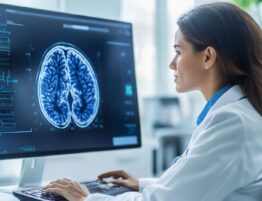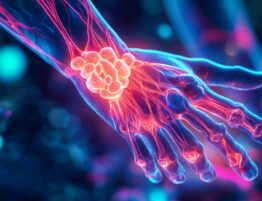Today, statistics show that almost 90% of people are right-handed. Based on handedness, people have different characteristics in how their brains work. Hand dominance has its own unique features regarding brain functioning and cognitive processes. Handedness differences involve enhanced activity in one of the brain hemispheres. People who are left-handed often have improved creative and visual abilities. Right-handed people are characterized by better analytical and logical thinking. Both groups have their own characteristics in speech and cognitive functions. Handedness affects a person’s ability to recover from serious diseases and neurological conditions.
The process affects everything from language processing to memory formation. A person may have different vulnerabilities and communication patterns based on their dominant hand. Understanding these differences is critically important for neuroscience research. Depending on which hand a person favors, their cognitive performance also differs significantly. Handedness opens up new possibilities for understanding our brain and its complex functions. Doctors can make personalized treatment decisions based on a patient’s handedness. Hand dominance has a significant influence on neurological diseases and recovery patterns. Vulnerability to certain diseases may vary between left-handed and right-handed people. Understanding handedness differences and their impact on brain function is enormously important for medical research.
The Science of Brain Lateralization in Handedness
LoneStarNeurology offers high-quality support for all people. Neurological health is essential for every person’s cognitive well-being and clear thinking. Neuroscience studies are crucial for understanding human brain health and function. Understanding how the brain works helps medical professionals choose the right treatment approaches. Today, almost 90% of people are right-handed, while left-handed people have unique brain structures that distinguish them from right-handed individuals.
The science of brain lateralization is essential for understanding brain function and cognitive differences. Depending on hand dominance, certain brain functions can work completely differently. Both hemispheres work together to process information, language, and motor control. Dominant handedness helps enhance the functioning of particular brain hemispheres. Research on differences between right-handed and left-handed people is essential for understanding brain function.
Right-handed Individuals
Left-hemisphere dominance. Handedness differences involve dominance of the left hemisphere for language processing. Right-handed people have better logical thinking and fine motor skills. Coordinated control helps achieve improved performance on the right side of the body.
Sequential processing. Right-handedness involves enhanced cognitive functions for speech and writing tasks. Right-handed people show more consistent speech localization in specific brain areas. Right-handed individuals typically have stronger and more predictable brain lateralization.
Higher predictability. For right-handed people, brain functions and structure are more predictable throughout life. They often become subjects for neurological research due to their consistent brain organization. It’s easier for researchers to understand their brain states and functionality.
Left-handed Individuals
Bilateral brain activity. The science of brain lateralization shows that speech and cognitive functions are distributed more evenly between hemispheres. For left-handed people, these functions work more equally across both sides. Almost half of left-handed people have bilateral or right-hemisphere speech dominance.
Greater hemispheric communication. One of the most significant advantages of being left-handed is improved information flow between brain hemispheres. Due to a larger corpus callosum, left-handed people have better brain integration and communication.
Creative and spatial advantages. Left-handed people are often considered more creative and imaginative. They have enhanced activity in both hemispheres, which helps them achieve unconventional thinking patterns. Left-handed people often excel in creative professions and succeed in artistic fields.
Cognitive performance differs between people with different hand dominance. Information processing in left-handed people tends to be more distributed and flexible. Left-handed individuals can become more cognitively flexible and perform better on unstructured tasks. However, they have higher rates of certain neurological conditions like schizophrenia. The science of brain lateralization shows significant differences between people with different handedness. Lateralization has a major impact on information processing and recovery from brain injuries. Different handedness patterns can create different predispositions to neurological diseases.
Motor Skills and Cognitive Performance Across Handedness
Hand dominance has a significant impact on cognitive functions and motor skills in humans. Based on hand dominance, the brain works differently and processes information uniquely. It’s important to consider these differences to understand how the brain functions. Depending on hand dominance, the brain can process information in entirely different ways.
Motor Skills
Left-handed. Motor skills are configured differently due to constant adaptation to a right-handed world. Left-handed people excel in bilateral motor coordination and have balanced interhemispheric communication.
Right-handed. Right-handed people have better performance in tasks requiring precise control. Fine motor skills are better developed, which is associated with increased accuracy. This relates to lateralization of functions in the left hemisphere, which controls the right side of the body.
Cognitive Performance
Left-handed. Left-handed people have advantages in creative and spatial thinking. They excel at creative tasks such as architecture and fine arts. This is characterized by greater involvement of the right hemisphere, which is associated with visual and spatial processing.
Right-handed. Right-handed people have more localized cognitive processing for logical tasks. They often perform better in structured tasks that require analytical approaches rather than creative thinking. They work better on systematic tasks due to left hemisphere dominance.
Both left-handed and right-handed people can achieve great success in many different tasks. However, differences in cognitive performance and motor skills play important roles in brain functioning. This reflects the unique structure and functioning of different brain organizations. Research shows that right-handed people work better with logical and structured tasks due to lateralized and specialized brain activity. In contrast, left-handed people use more flexible neural processing, which contributes to improved creativity and adaptability. Language processing also differs based on hand dominance patterns.
Handedness and Language Processing: A Neuroscience Perspective
Neuroscience studies include language processing as a key component of cognitive function research. Based on hand dominance, people have enhanced activity in different brain hemispheres, which affects how they process language.
- Language Processing in Right-handed People. Neurobiological studies show that almost all right-handed people have left-hemisphere dominance for language. Specific brain areas are involved in speech production, grammar, and language comprehension. Localization in the left hemisphere occurs for most language tasks. Right-handed people typically perform consistently in reading, listening, and speaking tasks.
- Language Processing in Left-handed People. Neuroscience studies show that left-handed people demonstrate greater variability in brain organization. More than half of left-handed people process language in the left hemisphere, similar to right-handed people. About 35% demonstrate bilateral language processing involving both hemispheres. Approximately 15% of left-handed people are right-hemisphere dominant for language, which is quite remarkable.
Studies show distributed activation patterns in left-handed people during language tasks that involve more brain areas than in right-handed people. Neuroscience studies using brain imaging show significant differences between left-handed and right-handed individuals. Studies have also shown that left-handed people often recover better after strokes due to their bilateral activation patterns, which provide alternative pathways for language recovery.
Handedness and Economic Decision-Making Tasks
Today, both left-handed and right-handed people show increased activity in different parts of the brain during cognitive tasks. Studies show that hand dominance significantly influences performance on economic decision-making tasks. These tasks relate to risk-taking strategies and how people cope with uncertainty. Based on hand dominance, people differ in emotional regulation and thinking patterns. Handedness can shape how brain systems function and develop, making this an interesting area of research.
- Left-handed Economic Behavior. Research on economic tasks shows that left-handed people have better cognitive flexibility. They excel at assessing risks and making decisions under uncertain conditions. In gambling situations and unknown circumstances, left-handed people demonstrate more variable behavior patterns. They may be more comfortable with risk due to enhanced bilateral brain activity. Left-handed people’s cognitive processing works better for handling inconsistent information and adapting to change.
- Right-handed Economic Behavior. Right-handed people show better structured and consistent decision-making patterns. They have enhanced brain lateralization due to left hemisphere dominance, which supports analytical thinking. Right-handed people prefer systematic and concrete tasks with clear logical frameworks. They excel at focusing on established strategies where logic is most important. In economic tasks, right-handed people show improved concentration and better performance on structured functions.
Emotions and intuition are often better developed in left-handed people, making them react more strongly to potential losses and unexpected results. In economic approaches, left-handed people may behave more unconventionally and show flexible decision-making patterns. Right-handed people typically rely on structured and logical thinking, making them better suited for traditional economic analysis and systematic tasks.
Handedness differences are extremely important for understanding how the human brain functions. Based on hand dominance, a person may have more creative inclinations or analytical strengths. Right-handed people excel at structured, logical, and systematic tasks. Left-handed people perform better on creative tasks that require flexibility and innovation. These differences may be subtle but can appear in various areas of life, including reactions to marketing strategies or pricing decisions.














Please, leave your review
Write a comment: